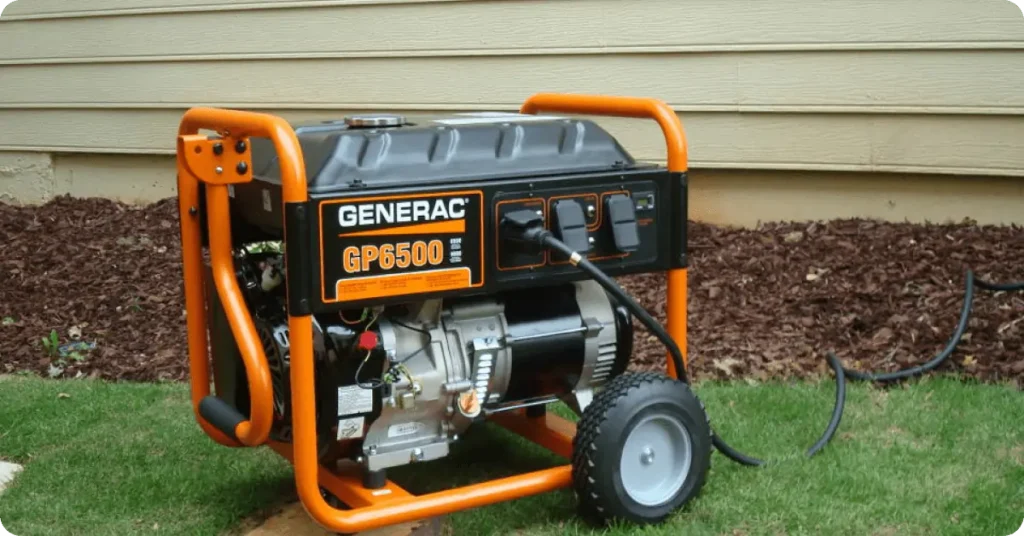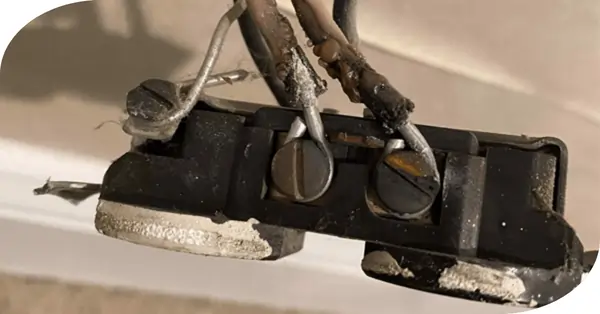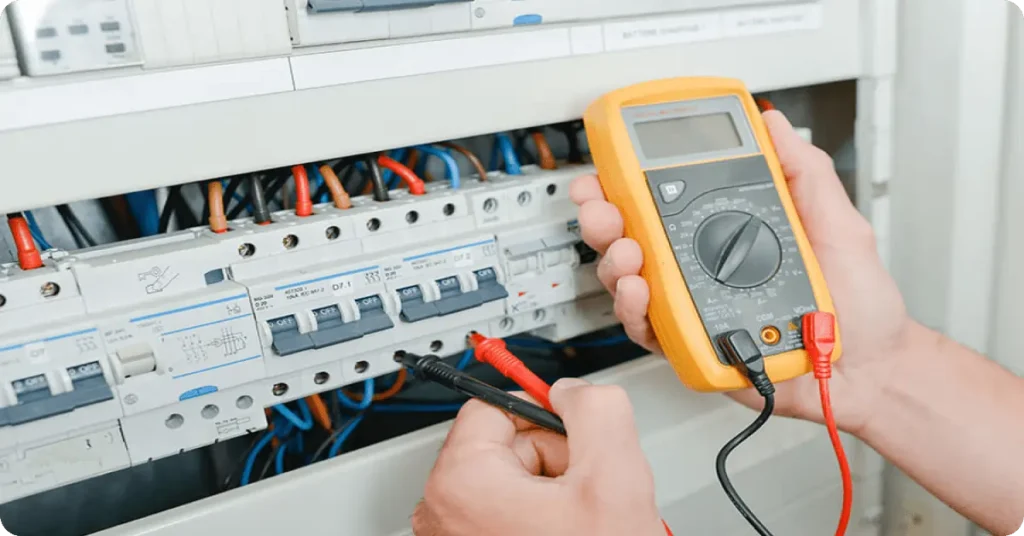Portable Emergency Generators In Detail
Portable generators are a great option if you have no access to gas or propane, don’t have space to dedicate to a standby generator, or simply want to take a more cost effective route to powering your home in the event of a power outage. The versatility of running on gasoline is a big selling point for folks who have seen their natural gas get shut off during an emergency. Also, some units can run on propane AND gasoline (some called “trifuel” can even run on natural gas in ADDITION to gasoline and propane!). The neat thing about portable generators is that they come in a variety of operating sizes. In short, you can get a relatively inexpensive unit that will power your necessities such as the refrigerator, lighting, general use receptacles, and heat. You can also get a larger unit should you want to power more of your home, including a central air conditioner! A relatively large unit that could power a 4-ton central AC unit and the rest of the house (minus an electric range) can be purchased for right around $1000. Newer units come with electric and often remote start. The install typically runs from $700-$1300. If you happen to have natural gas or propane at your home, there are many units that can run on these fuels, you just need a plumber to install a connector for you.
Sizing of Portable Generators
Generators typically will be advertised with a peak voltage as well as a running operating voltage. Don’t get suckered into advertising gimmicks that display only the peak wattage.The peak wattage is what the instantaneous draw can be, usually for a split second, during a motor start up (motors draw many multiples of their running voltage for a very short period of time on start up). It is quite honestly best to simply ignore the peak number when purchasing a unit. I’ve seen many cheap units advertised with only peak wattage, confusing consumers into thinking it is a much more powerful unit than it really is. Please be wary of this.
A common practice is to display both. For example a generator that is advertised as 12500W/9500W has a normal maximum operating wattage of 9500W. A 7500W/6000W unit has a normal maximum operating wattage of 6000W. Keep in mind if you’re running one of the “dual fuel” generators that can use propane/natural gas, the maximum output will be slightly less. In terms of sizing, always remember that the less you stress the generator, the more efficiently it will run.
For bare essentials such as oil/gas heat, refrigerator, lighting, and television a small 5000W generator will more than suffice. You could go even smaller depending on what you want to repower. If you have a central AC you want to repower you’re likely going to need a generator that is 7500W or more.
Figuring out the wattage draw from appliances is pretty easy today because they’re all marked. If you look on the back or cord of your refrigerator, TV, range, hair dryer, etc. you simply need to add these numbers up for the maximum draw. Rather than write a more complicated article than necessary I would recommend you to consult the electrician installing the inlet and transfer devices. Tell them what you ideally want to power and they can give you a good estimate for what size generator you should get.
Bigger is typically always better, the generator will work less hard. The downside to getting the biggest generator you can afford is that the weight and size of moving it around may become cumbersome depending on how far you need to move it in the event of an outage.
Installation of Portable Generators
Most of the installation work here has to do with your main electrical panel and an inlet device. An inlet device or inlet receptacle as it is sometimes called is a male recessed receptacle. This inlet box is installed on the outside of your home, close to where the generator will be when in use. It is wired to a new double pole breaker in your electrical panel, typically 30A so that the generator can supply 240 volts to the house powering each side of the bus bar just like the utility power does. The most important thing to note here is that the generator must not back feed the utility. This is a very common occurrence and is extremely dangerous and illegal. As scary as that sounds, there is a simple solution that is UL listed and easy to install. This device is called an interlock. An interlock is a precisely cut, sliding, metal device that is mounted to your main electrical panel. It can only allow the 30A breaker (connected to the inlet box) to be turned ON when the main breaker is turned OFF. Likewise, the main can only be turned ON when the 30A breaker connected to the inlet box is turned OFF. To connect the generator to your new inlet box, you can purchase a 30A/240V extension cord or your electrician will make you one depending on the distance from your generator to the inlet box. Let’s take a look at some of the various components:
Inlet Device: The inlet device is installed on the exterior of a home. A common location is near the electrical meter as you can see in the picture below. The inlet box contains a recessed male receptacle so that a cord set can be safely plugged in. The inlet box usually contains an L14-30 style receptacle (30A,240V), sometimes larger inlet boxes are used with L14-50 receptacles (50A)
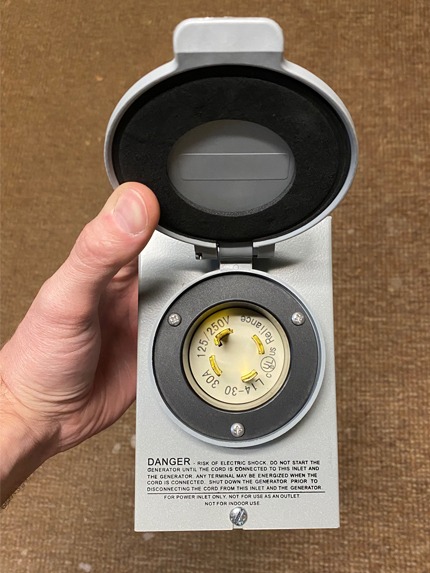

Manual Transfer Device: Today, it is much more common for manual transfer devices to be installed in an existing electrical panel. The reason being one need not select which breakers can be used during an outage. An interlock device like the two pictured below allow for any and all breakers to be turned on to repower the home from a generator. A highly reputable manufacturer is Interlockkit.com. The limitation here becomes the output of the generator, not the transfer device. See the picture below of an old manual transfer switch where only the breakers in the device can be used, other breakers in the main electrical panel will not be able to be repowered. Any transfer device used in America must be UL listed and NEC complaint.
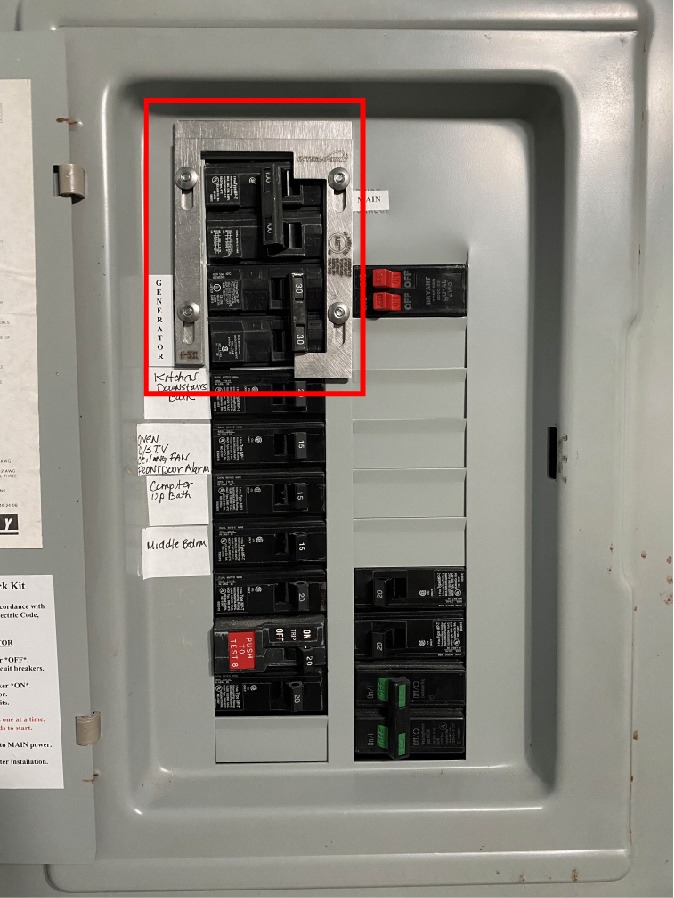
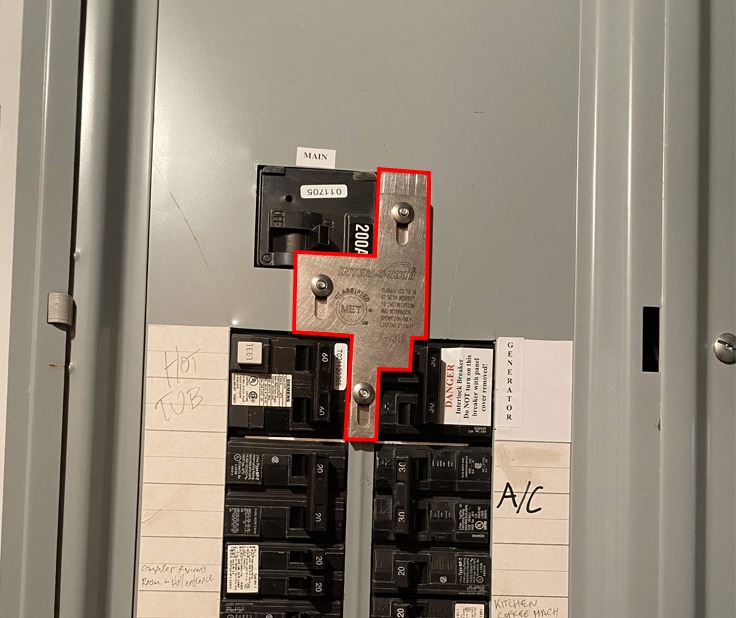
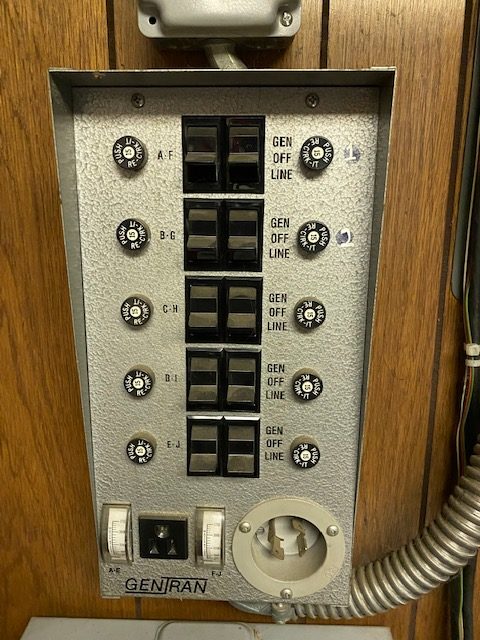
Cord Set: The cord set is the cable that connects the generator to the inlet box. They are typically 10 gauge and will have an L14-30 male end on one side to connect to the generator and female on the other side to connect to the inlet device.
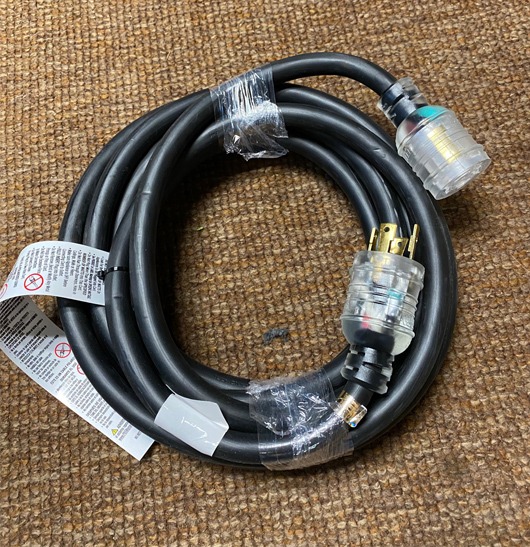
Generator: Portable generators come in all shapes and sizes with various capability limits. Some are small and great for camping or powering a refrigerator or a heat system in the case of an outage. Some are much larger and can easily power an entire home.
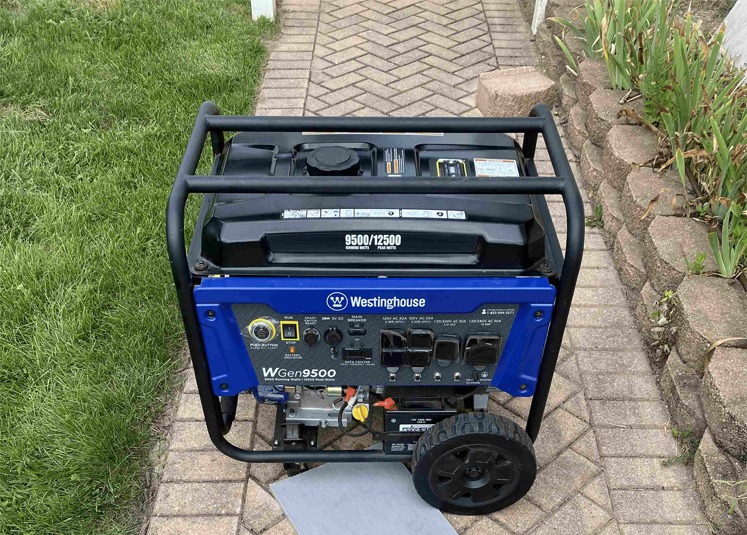
Pricing
So how much might it cost to get a portable generator installed professionally by a licensed electrician? Assuming your electrical panel is in good condition, prices (as of 2022) range from $700-$1800 depending on the complexity of the installation and how far the inlet device will be located from the electrical panel. Please see our Electrical Registry to find a licensed electrician near you that is experienced with portable generator inlet/interlock installations.
How To Use a Portable Generator:
- Bring generator outside to location near inlet box sufficiently away from home and any other combustible materials. GENERATORS MUST ALWAYS BE RUN OUTSIDE!
- Turn OFF ALL breakers in the main panel, INCLUDING the main (the interlock will insure that you do).
- Start Generator according to the manufacturer instructions, newer units are a simple push button.
- Plug in 30A extension cord from generator to inlet box, turn on any breakers on generator.
- Turn on 30A generator breaker in panel.
- One at a time, turn on breakers to repower your home. Depending on the size of your generator you may or may not be able to use your central air conditioning.
Pros of Portable Generators
- Cost – A portable unit properly installed by a licensed electrician will be roughly 20% or less of the cost of an automatic standby unit.
- Portability – If you have a relatively lightweight generator, you can take it with you on a camping trip, to a jobsite, etc. Should you need a repair, you can bring it to a local small engine repair shop as well.
- Replacement – If your generator is at the end of its life, you simply need to purchase a new one, the connections on the home and generator are going to be the same.
- Size – If you only want to power your refrigerator, gas or oil heat, and some lights, you would need a very small, inexpensive, easily portable, generator.
Cons of Portable Generators
- Operation – There is some work involved, some people prefer the hands off aspect of an automatic unit. If you’re experiencing a hurricane or severe snow storm, you’ll have to clear a path to bring the generator outside.
- Vicinity to Unit – If you’re on vacation or nobody is home to operate the generator during an outage, the generator will be of no use to you.
- Gas consumption – Portable generators typically run on gasoline. This means that you’ll need to maintain the gas level in the unit during operation. This requires turning the unit off, refueling, and then turning it back on following the initial procedure.
- Weight – Not that you would typically be picking up the generator since they have wheels, but larger units can easily weigh over 300lbs (135kg). They can be cumbersome for sure.
I hope you got some value out of this article and it helps you make an informed decision about either getting a portable generator or an automatic standby generator installed in the event of a power outage emergency. Head over to our Electrical Registry for a comprehensive list of electricians we recommend for generator installations. Thanks for reading.
A portable generator can repower a home in the event of a power outage via the installation of an inlet device, transfer device, and cord set. They can be powered by gasoline, propane, or natural gas and when sized correctly can power an entire home.
An inlet receptacle is wired to the electrical panel and made NEC compliant via a transfer device. The generator needs to be plugged in with a cord set to an inlet receptacle, typically 30A that will allow 240V to refeed the electrical panel. Note this is the only legal and safe way to hook up a portable generator to a house.

